THE CAT
Prologue
A very minor tendril of the lightning strike caught the running cat’s head on its left side. The thin super-heated tendril split the cat’s ear half way down and tossed its body down and to one side. The cat lay seemingly lifeless while the storm raged on, the water flowing around the cat no threat to its unconscious form because it was all flowing in little rivulets down the river’s bank and then adding to its massive raging body of water. The cat woke up, the pain in its left ear intense, but so bad the cat made no move to lick or disturb it in any way. He tried to reorient himself but could not. What had happened? He had no memory of a storm, although the departing effects of it were everywhere around him.
With great care, he rose to his feet. He only remembered the cleft when he stumbled into the two upended and angled slabs of rocks that formed it. He moved through the small brush, away from the nearby river, crawled between the protective rocks and fell instantly asleep. When he awoke, the pain in his ear was still a dull pulsing thing. He tried to touch the area by bringing up his left paw but the pain was too great. He had to ignore the damage that had mysteriously befallen him. The rest of his body was wet but uninjured. His front paws tingled but were intact. What had befallen the cat was not something to be considered. The only things to be considered were food, protection from predators and rest. He chose to rest as the primary necessity over the other two and fell back into a deep sleep.
THE CAT
Chapter I
He was impossibly fast. But it was his only apparent talent. He wasn’t particularly big. He didn’t have particularly long claws. He lacked a luxurious female attracting fur. And he was young, too young to live and survive alone. But the rules about staying alive in the forest, known to a young cat only by genetic imprinting, were learnable through a pride, a tribe or small grouping where information of older members could be copied by the younger. There was no language except for deep lung screams of outrage, pain or calling into the night.
He lived by speed. He instinctively knew it was his only talent. And loved almost instantly reaching that speed and then seemingly floating across the forest floor, naturally gliding between any and all impediments, from trees to thickets and streaming bodies of water. He survived by using the speed to impact small animals, snatch them from before him, shocking them into stillness with the impact and then launching himself high up the side of a nearby tree trunk to eat his prey.
His most learned tool to supplement his speed was the early observations when he’d been born to a successful pride. The other members of the pride, in turn, became injured in territorial battles or fights during the taking of large prey. The pride dissolved, when the injured could not return to the hunt or through festering from their wounds, simply died in the den.
There was no longer a den. By the time the cat broke from the warmth and comfort of pride support the wounded den was taken by a pride of larger cats. The cats who were not fast, but they were substantially large, and but hunted in packs to great success. All the cat had was a cleft between the rocks, although the cleft was close to the running stream that ran down the side of the valley and where two giant trees rose up from the rocks on either side. The stream was a voracious fast-moving body of jumbled water, but the cat could jump it one single bound, moving fully thirty of his own body lengths through the air. Either tree could be scaled to a vast height if a threat appeared that was too close to allow for the use of speed across the forest floor or a leap over the running water did not allow enough time.
The cat was alone, except for the presence of a single beaver that would very occasionally move downstream and come to rest near the almost invisible entrance to the cleft. The beaver was large for its species. The cat calculated that it was fully half its own size, which was exceedingly large for such a ruminating animal.
The cat crouched and watched the beaver do the same thing by the side of the water. The beaver was slow, so it’s only defense was the water which it never got more than a few body lengths from. The beaver crouched and made believe it could not see the cat or know of its existence. The cat didn’t understand that. It only felt it. There was no other reason the beaver would continuously visit the same place so many times. The beaver would make a fine meal or many of them, but the cat never thought of considering it prey. He didn’t know why because his brain didn’t work that way. He was a very purpose born animal meant to react to life around him. The cat reacted to everything and thought nothing about the reactions. There was no information, genetic or otherwise, and no nurture training that might allow the cat to lay and calculate his next move. The next move would be dictated by circumstance, and that fact the cat also remained unaware of.
He did not want to be alone. The time inside the den, with the other young cats, with an older female to feed on and then older males still that brought back prey for the young cats to feed on. The play inside the den had been the only thing the cat could ever consider as being any kind of happiness or bliss. The world outside the den, when that night had come, was a place of fearful predators where movement and speed meant just about everything unless great size was provided as a gift at birth. The cat lacked that gift.
The beaver slipped back into the water without a backward glance. It disappeared into the roughest of currents, at home no matter how roiled and moving the waters might become.
The cat cried very quietly but didn’t know it was crying. The sound was that of a small wounded bird, gently cheeping, but the spaces between cheeps filled in with other slight sound variations. Nothing in the forest sounded like a crying cat and nothing except predators might even identify it for what it was.
He didn’t know he was a predator. It did know it was a carnivore because it only ever consumed the meat of other animals. But did not hunt other animals, no matter how big or small, out of conscious willfulness. It hunted out of reaction. It responded only to genetic messages not sent to the cat’s brain as messages at all. The cat felt. When something felt right the cat went with the feeling. There was no conscious thought. The beaver was not killed because it did not feel right for the cat to kill it. The cat cried when it went away because the cat felt the loss, although there was no reason for the action. The cat was enough of a naked survivalist to snuff out the crying as quickly as it could get control of it, however. Sending prey or wounded animal sounds through the forest was a very quick way to end up wounded. The embedded single learning experiences the cat had taken from the den had taught him that those cats wounded were those cats soon dead. To survive a cat must not be wounded. The reaction to other life in the forest had to be tempered with that learning and the cat was very rigid in countering the feeling that overcame him when larger animals came too close
Very subliminally, once the cat suppressed the very quiet crying it had been doing, the cat wondered whether it stayed near the cleft, the trees, and the flowing stream, because they were good for survival or because the beaver always came back to see him at that specific location. That the cat thought about the beaver coming back to see him personally was the first surprise in the cat’s life that it might think anything at all. The cat lay where it was, although, after crying, it would have been safer to climb immediately high up onto one of the high tree branches. It was shocked by the thought of the beaver appearing in its mind as a part of his life. The cat literally shook its head to attempt to rid itself of the discomforting thoughts.
The cat’s right ear rotated almost all on its own. The tufted ear, set higher and outward from the cat’s forehead, turned to where a single rough but small and darkly vibrating sound had been transmitted and then either purposely or accidentally travel across the forest floor. The cat’s mind was a fast as its body. The cat didn’t run. It leaped directly upward into the air, its body twisting ninety degrees to the left, its legs extending as far as they would go outward, while its sheathed claws flew outward to grab the bark of the tree trunk nearest to where the stream flowed. The cat was gone so fast from the cleft it was like no animal had ever been there. The cat ran up the tree at such speed that no other animal could see the movement unless concentrating on the exact path the cat’s smoothly powerful upward surges took it. The cat’s great speed was derived from uncommon musculature that also gave it a subsidiary talent, and that was jumping.
Upon reaching a substantial branch of the tree fully fifty body lengths up the height of the tree the cat slowed, turned and the gently set itself down upon a curved surface about half the diameter of his own body. His claws automatically dug into the soft back and firmly anchored the cat into place. Only then did the cat look down to see if its quick reaction to even the most-slight or passing of threats had been worth the expenditure of energy.
It had. A thin willowy but large and powerful bear slowly approached the cleft, moving steadily upstream. The cat stared. He’d encountered bears before but only by observing then through heavy brush or floral cover. It had never been necessary to run from one before, although, once again, the cat’s genetic transfer of information made the cat feel afraid. The bear was twice his size and it was hunting him as prey. The bear took its time. It carefully snuffled its nose deep into the cleft, it’s body a bit too large to set itself down inside, as the cat had been able to do. The cat remained totally motionless. Its tawny coat was near invisible against the turning leaves of the tree and the cat knew it. Not a single hair or whisker moved.
The bear finally looked up. The cat instantly knew that the bear had guessed that he was in the tree, and then been somehow to able to see him. The bear stared up into the cat’s eyes. Even though the cat knew it had been seen it still did not blink.
The bear moved to the trunk of the tree and then began to climb. The cat felt real fear for the first time. Staring down he could see the size of the larger animal’s claws. The cat knew by the reaction that it would have no chance of defeating the bear in combat.
The bear did not climb as the cat had climbed. It worked methodically, slowly and almost stolidly, but it rose every higher up the trunk. The cat still did not move. There was only one direction to go since the cat was too high up in the tree to jump to the ground. The cat finally looked upward. The tree was half again as high as the distance he’d initially climbed. The branches grew ever smaller near the top.
The cat looked back at the rising bear. Would the branches above allow the cat to climb high enough to avoid the bear because of its greater bulk and weight? The cat had no answer. It looked back and forth several times before looking down at the passing stream. The cat could jump into the stream he instinctively knew, but it would be a jump into the jumbled moving water. Although the beaver lived in the water the cat wanted as little to do with the cloying fur-disturbing substance as he could.
The cat looked over at the other tree. His mind instantly connected the long branch his body was laying on with the other nearby but an equally tall tree. The end of his branch did not connect to any branch of the other tree, but it was close. The bear was two body-lengths below him and beginning to make self-congratulatory mewling sounds when the cat made his decision. The cat’s body moved at the speed of his reacting thought. The cat rose and then accelerated to full speed until he reached as close to the end of the branch as he could maintain purchase. He sailed through the air, only to impact on many branches on the other tree. His jump had been so significant that the main part of his body impacted against the main trunk of the tree. His claws automatically dug in, like before, but he could not breathe. He would have fallen if his claws hadn’t held on without instructions.
Finally, after what seemed like the longest time, the cat finally started breathing again. He moved to one of the outward protruding smaller branches, turned himself around and took up the same posting he’d had in the other tree. He stared across the distance at the bear. The bear occupied his old place, although staying high in the tree by wrapping great furred arms and legs around the main trunk instead of using a branch.
The bear stared at the cat, its expression non-existent.
The cat stared back.
There was no tacit understanding between the two animals. The contest appeared over because there was no way the bear could move fast enough or fly far enough to reach the second tree. After many seconds, the bear began to ease itself back down the trunk. It worked slowly, just as when it had risen, occasionally stopping to look up at the cat. The cat’s eyes never left the bear.
The second thought the cat had ever had occurred when the bear carefully eased itself, as best it could, into and then out of the cleft below.
Was the bear going to climb the tree the cat was now in? The cat sat, looking down at the bear and wondering about having the thought. What could be done?
The other tree was right there in front of him. He could jump back. How many times could he jump back and forth and how many times could the bear climb the trees?
As the cat reflected, the bear slowly eased itself along the bank of the river, stopping to sink its muzzle into the passing water. The bear took one last look back, and then made its way upstream.
The cat lay on the branch, knowing it had a few scratches that would need to heal from the jump. It stared out over the forest, quite willing to wait until nightfall, since his sight and smell talents were maximized by his nocturnal nature, to climb back down the tree to the forest floor below. The cat lay thinking about thinking for the first time. He turned his head many times, trying to physically adjust it to the fact that things were going on inside it that didn’t seem to fit with anything in his world or existence.

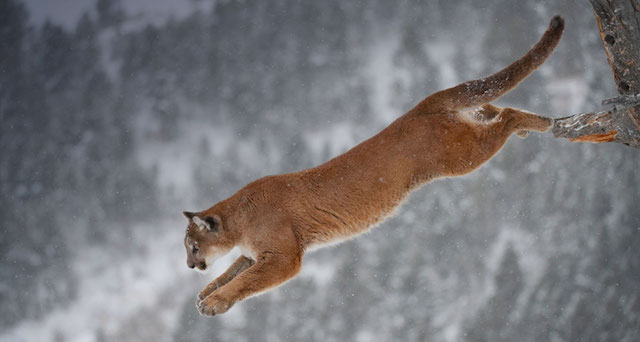
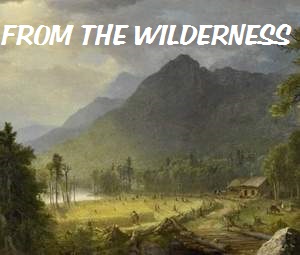


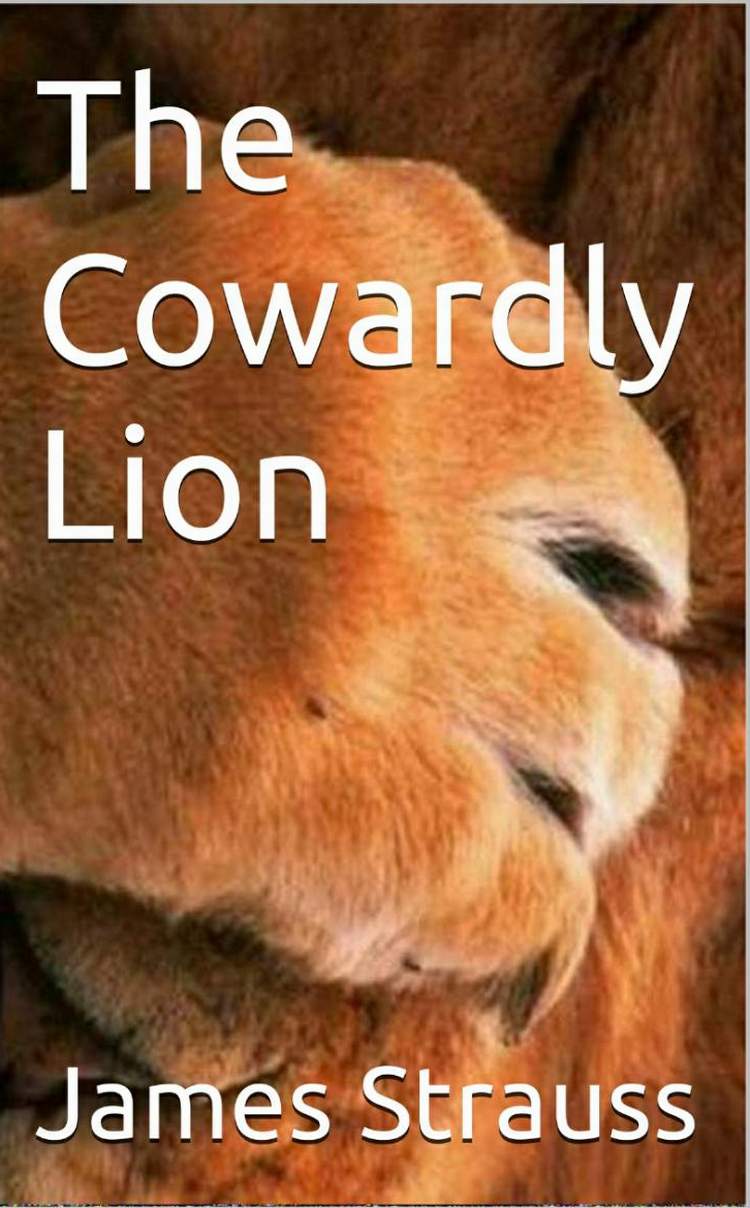
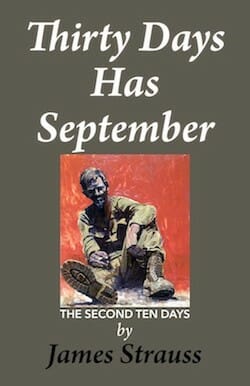

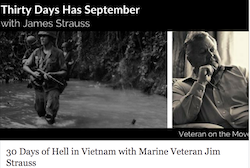
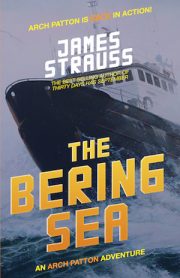

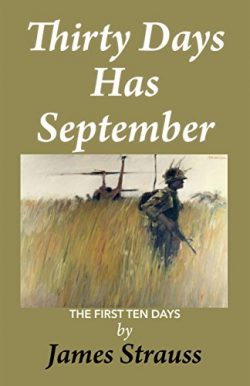


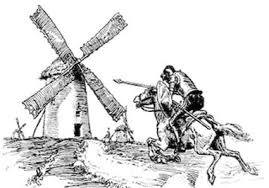
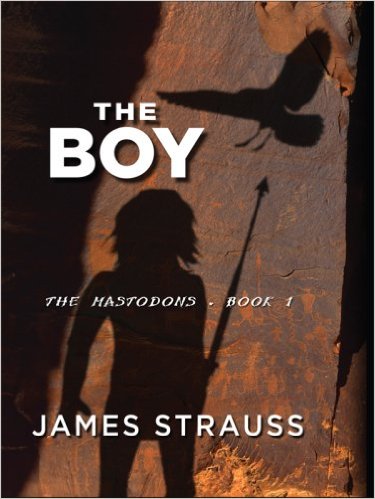
it is a gift James and you’re using it well. I think the right word there is “husbanding” but it’s a little known usage.
Yes, I agree about the word. Thanks for the compliment too…
Semper fi,
Jim
I agree with the others — a great new story, and a relief of sorts from the Vietnam combat stories. You need to edit for missing words and some words that need an “s” added or removed, but that is minutia for someone else to edit. Looking forward to the next chapter. Semper Fi Mark
Thanks, Mark. Keep going back finding slights edits along with the help of readers.
I am enjoying creating this scenario.
semper fi
Jim
Got hooked with the picture, enjoyed the Prologue and Chap 1, anxiously waiting for what’s next. Thanks for your talent.
Thanks Richard, the second chapter is up right now…and I am most happy you are liking the story and bothering to write about that on here!
Semper fi,
Jim
Two thumbs up for Chap. one, Lt.
Tomorrow for chapter II, Sgt. Fun stuff….glad you like it…
Semper fi,
Jim
Glad to see you are again producing a really nice tale – enjoyable.
Normally, as a wildlife biologist, I am not much in favor of putting “people thoughts” into animals, but when you do it, it seems naturally done and normal.
This Chapter 1 is begging for the rest of the cat’s tale (no pun intended!) to be told, post-haste!
World of difference from TDHS, thankfully, although I am truly enjoying that – but this, being quite different, is truly enjoyable. Thanks, LT!
Yes, Craig, I have the same problem in reading about animals that ‘think,’ because they really don’t for the most part,
at least not in ways that are fully definable by humans.
Brings to mind the difficulty the species might face one day if alien intelligence is ever really encountered.
Animals act and react, as you know…
but the rest is sort of conjectural, at best.
Thanks for the high compliment.
Semper fi,
Jim
Looks like another winner LT!
Did you mean to repeat the first sentence of the prologue at the end of the prologue?
Nope. Thanks so much for being part of the great team that really reads the stuff and then comes on here to tell me.
Edited the sentence out. Have no idea how it got there…
Semper fi, and thanks Jerry…
Jim
This is starting off as a fun read, always exciting,
More coming very soon…
Thank you, Jim
Have you seen the 6 autographed Book Special?
Here is Link
Book Special
Interesting. I stumbled across this work while checking to see if any changes to TDHS.
I like the pictures. Pumas are such majestic animals.
I assume the lightning strike opened up some ability in the cat’s nervous system / brain that other cats don’t have?
I am not aware of male cougars having anything to do with raising the young.
I see some places where some small editing might be useful; but it is too late tonight.
Always thankful for your input and attention to detail. Have been correcting items.
Enjoy. More coming soon.
Very well written & engrossing story. Good subject matter & compelling drama. The only quibble I have with your composition is that there are two minor errors, the word to was used after the phrase “when larger animals came to close, instead of the correct word too. The other error in my opinion is the use of the word “leaped “into the tree, instead of lept into the tree.
Thanks for your input, Michele.
Corrected one and left other.
Leaped and Leapt are both are acceptable, with Leapt favored by traditionalist, which obviously I am NOT.
~~smile
James, you have been blessed with a talent for excellent story telling.
Thank you, Chuck and I also appreciate your input on Facebook
Enjoyed Chapter 1…reminded me of The Boy, which I loved! Been busy finishing my mystery suspense, Formula 916, which is about the Pharma industry. But… just because I don’t seem to be around much, doesn’t mean I’m not reading your comments on FB. You seem to be doing quite well in Lake Geneva and producing a ton of readable thoughts! Love your sidekick cat, too…Marsha (LIM)
Thanks Marsha and glad you are hard at work with yuor own writing. Send me something. It is always quite wonderful to receive the rare plaudits from other authors.
Semper fi,
Jim
I like this.
Thanks, Terry.
More coming soon.
Jim
You got me again……
Thanks James. Love your guitar stuff, so helpful to my mindset…
Semper fi,
Jim
James, you have done it again. Had me hooked from the start. Now I wait
Have had this in mind for a while and it does give a break from the final days of Vietnam.
Thank you for sharing your interest.
When time allows I would appreciate your sharing my 6 Book Special with your friends.
Book Special
How do you do that? get into the animal and think for him meanwhile telling a story you have logically imagined for him.
I find it fascinating. Your knowledge of cats and almost humanizing them is so creative.
And you draw the reader into all these scenarios at the same time.
I am in awe.
I don’t know Karen. I just am the way I am and I am so stoked by your compliment.
Thanks for writing it on here and being with me through the ages on facebook…
Semper fi,
Jim
Oh my word! Publish your grocery list, to do list or anything! Hooked again reading some of the best stuff available. Joyce brought home Steven King’s The Outsider today, I’ll get to it. Later. Write fast, I’m needy/greedy!
Now that’s a huge compliment. Steven King or me and you picked me. Thanks so much.
I am tap dancing across the top of my dog house….
Semper fi,
Jim
Your ability to address what comes to mind is amazingly inspiring for me. Silent for so long recording great work by other authors. Again you pull cat experiences from my mind as they are such magical creatures to observe. After coming home from Nam I looked for some meaningful employment and ended up getting a job at the Animal shelter just south of SF airport at Coyote Point. All kinds of critters were brought there, even big crane’s hit by aircraft. When I first arrived I thought about adopting a cat so when I looked down the aisle there was a white arm sticking out of a cage with a cupped paw that was waving me down to his cage. What? Of course his message didn’t elude me so I accepted the partnership. I was driving my 66 Mustang converse I just put him on the dash up against the windshield. He’d stay put no matter what until I got home and called him out. Pure white magical entity that could take you on a walk in the surrounding 360 acre estate I was living on….see James …you effect magic in others. Appreciate your touching my life.. just ordered the 1st book in Mastedon series…
What a pleasure to come on here and read that you are so taken with the work.
Sometimes I do not look upon the ability to write as a gift. It just seems to be there.
But it is wonderful to read the writing of real men of life experience moved enough to write like you have written here.
I cannot thank you enough and know that it keeps me going…
Semper fi,
Jim